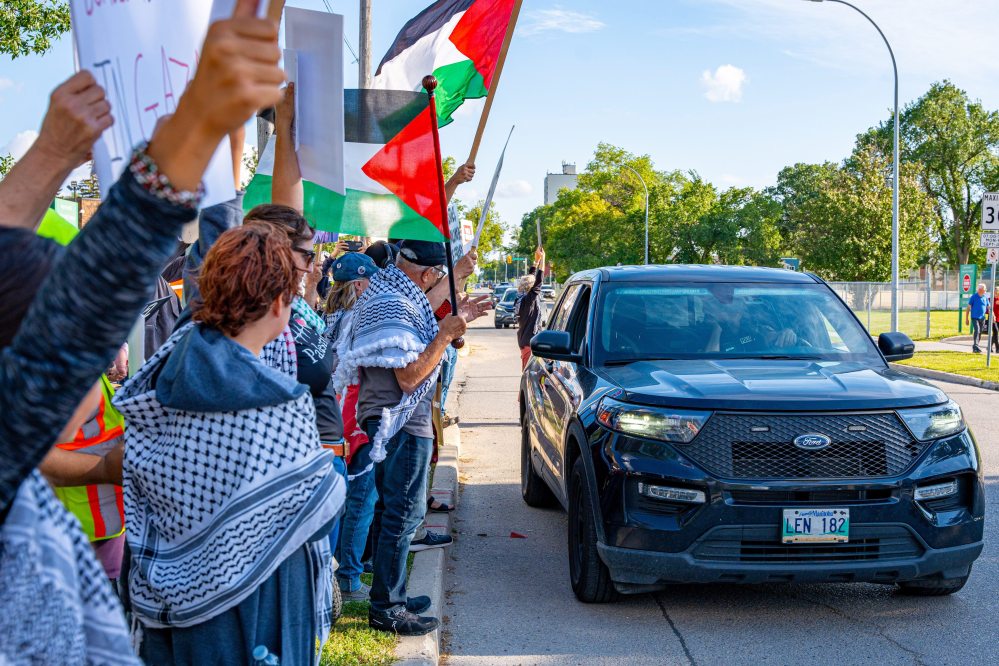COLUMN: View from the Legislature – Harassment and intimidation are not peaceful protest
Advertisement
One of the things I have consistently stated during my time in elected life, whether as an MLA, the attorney general or even as premier in the fall of 2021 is that people have a democratic right to protest. In fact, it is more than a right, it is a critical part of our system of governance. It is a legitimate way for citizens to express their concern with government policy or decisions.
But the right to protest is not without its limits. In 2022, when protestors set up an encampment at the steps of the Manitoba Legislature, it ultimately became an issue of safety for those who worked and visited the building, resulting in the lawful and peaceful removal of the encampments. During my time as attorney general, I commented publicly that blocking places like schools or hospitals as a form of protest wasn’t acceptable because of the negative impact it has on people trying to access those facilities.
Canada’s courts, which have always been strong defenders of the right to protest, have also said that the right to protest does not include harassment, threats or the intimidation of others.

The last place one might think this would become an issue is at Folklorama, Winnipeg’s iconic celebration of culture. It is a festival that has always gone out of its way to remain non-political and instead simply celebrate the traditions of the many cultural backgrounds that are represented in Manitoba.
But as I was visiting the various pavilions during the two-week festival, one visit was particularly concerning. At Shalom Square, the Israel pavilion, those who attended the performance were confronted with many protesters near the entrance of the facility hosting the pavilion. While some protesters held signs in silence, others yelled at those entering the pavilion, including expressing support for Hamas, an entity long deemed a terrorist organization by the Canadian government. Some reported slurs being shouted and comments like “Hamas is coming for you.” For those in the Jewish community, this would have been particularly intimidating as it was clear much of this was hatred directed at them. This is especially so as the reported instances of antisemitism have been rising significantly in recent years.
To be clear, protests about the actions of the Israel government are not uncommon even in Israel where there is division among its own citizens. In Canada, those peaceful protests are a protected right. But that is different than demonstrations that are intended to harass, intimidate and to create fear in people, which is what I witnessed at the Israel pavilion. Just as there is a protected right for peaceful protests, there is also a right protecting people from harassment and threats.
When these types of things happen, there is a tendency for officials to remain silent as a form of de-escalation. And yet, it seems that often it has the opposite effect, and it further emboldens those who are willing to go beyond the protected rights of peaceful protests and use intimidation, harassment and even hatred as a means of demonstration. What is needed is a clear statement from governing officials that they are committed to peaceful protests as a legitimate and meaningful way of practicing democracy in Canada but that actions of harassment and intimidation that can cause physical and psychological harm to fellow citizens are not acceptable and will not be allowed.
Ultimately the rights of a civil society include being able to disagree and to show that disagreement. But it also requires that people are free from harassment and intimidation. Those who are entrusted to protect both the right of peaceful protest and the right to live free of threat and intimidation need to be committed to upholding them equally and consistently.
